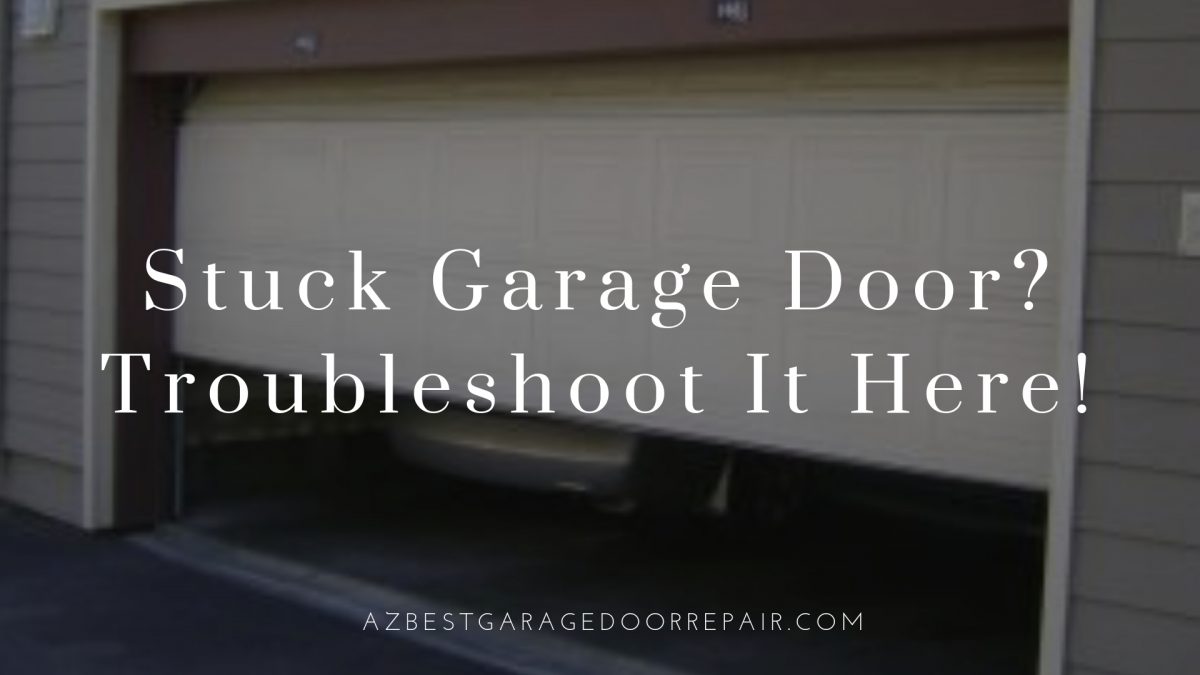A stuck garage door can happen to the best of us; occasionally even with regular, monthly maintenance. Thankfully a stuck garage door can be fixed with little to no inconvenience. Keep in mind though that if the door sticks in the open position, it presents a safety concern, necessitating the need for immediate repair.
Troubleshooting a Stuck Garage Door
Locked Garage Door
If your door or opener is equipped with a lock, make sure it is either turned off or disengaged, then reattempt to operate the door before troubleshooting a stuck garage door further or calling a garage door repair professional for assistance.
Depleted Batteries
Remotes require 3V lithium batteries to transmit wireless signals to the garage door opener. Weak or depleted batteries can result in an inoperable door. The best way to determine if new batteries are needed is to try operating the door with the wall-mounted control panel. Batteries should be relatively easy to find online or at any big-box retailer. The remote may need reprogramming after replacing the batteries.
Broken Garage Door Spring
Torsion or extension springs counterbalance the weight of your garage door as it moves along the tracks. Standard springs are designed to last 10,000 cycles, with one cycle being spent each time the door opens and closes. 10,000 cycles can last anywhere from three to fourteen years; dependent on personal usage. A broken garage door spring will result in a nonfunctional door, and if it happened during operation, the door may become stuck. Broken garage door springs always require professional replacement.
Faulty Photoelectric Sensors
Installed six inches above the garage floor, on the inside of the door, are two photoelectric sensors or “safety eyes.” These sensors are designed to stop the downward momentum of the door if an obstruction is detected. The door will not work anytime something is blocking them, the lenses are dirty, or they are misaligned. Direct sunlight may also cause interference. The International Door Association strongly encourages testing the sensors once a month to ensure proper functioning.
To test: Start with the door in the fully open position. Stand inside and use the remote to activate the door to close. As the door is closing, wave a long object, such as a broomstick in front of the safety eyes. Your objective is to “break the beam.” If the door fails to reverse and reopen, do the following:
- Install “eye shades” to block glare
- Wipe both sensors with a clean cloth
- Adjust the sensors by hand if they appear to be out of alignment
- Contact a professional to come service the door’s photoelectric sensors
Damaged Garage Door Tracks
The tracks will inevitably need to be adjusted once or twice during their lifespan. Daily use, corrosion from inclement weather, something bumping into the tracks, or inadequate lubrication of vital components (the tracks should not be included in this monthly maintenance requirement) can cause them to bend or become misaligned. Minor dents can be bent back into place using a soft hammer. Severe damage should be left in the capable hands of a professional.
Local Garage Door Repair and Service
Arizona’s Best Garage Door and Repair Company is proud to provide the greater Phoenix metro area with professional garage door services. Whatever your issue, no matter how big or small, contact the pros at Arizona’s Best Garage Door and Repair Company for prompt and reliable repair. Our trucks are stocked daily with high-quality replacement parts for same-day service. (480) 485-5505.






